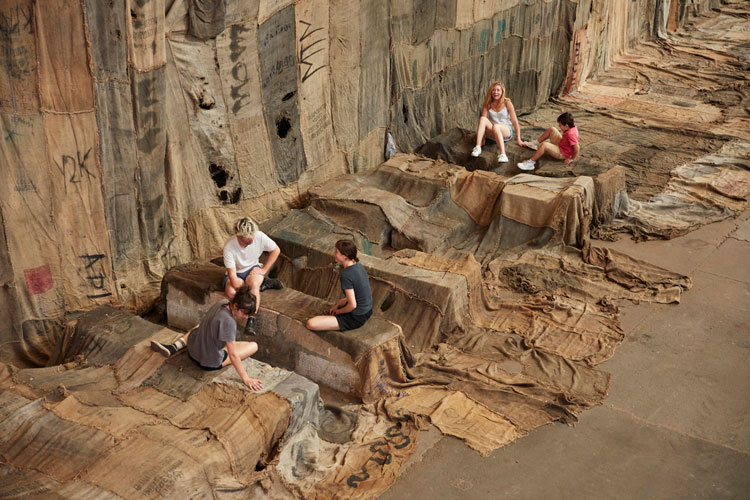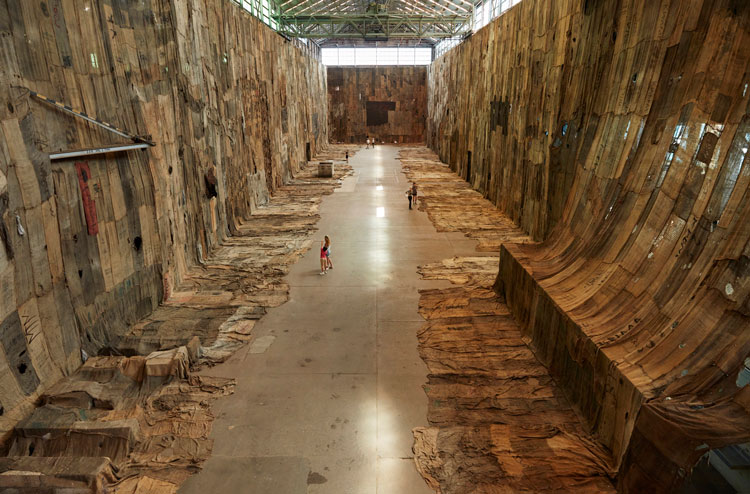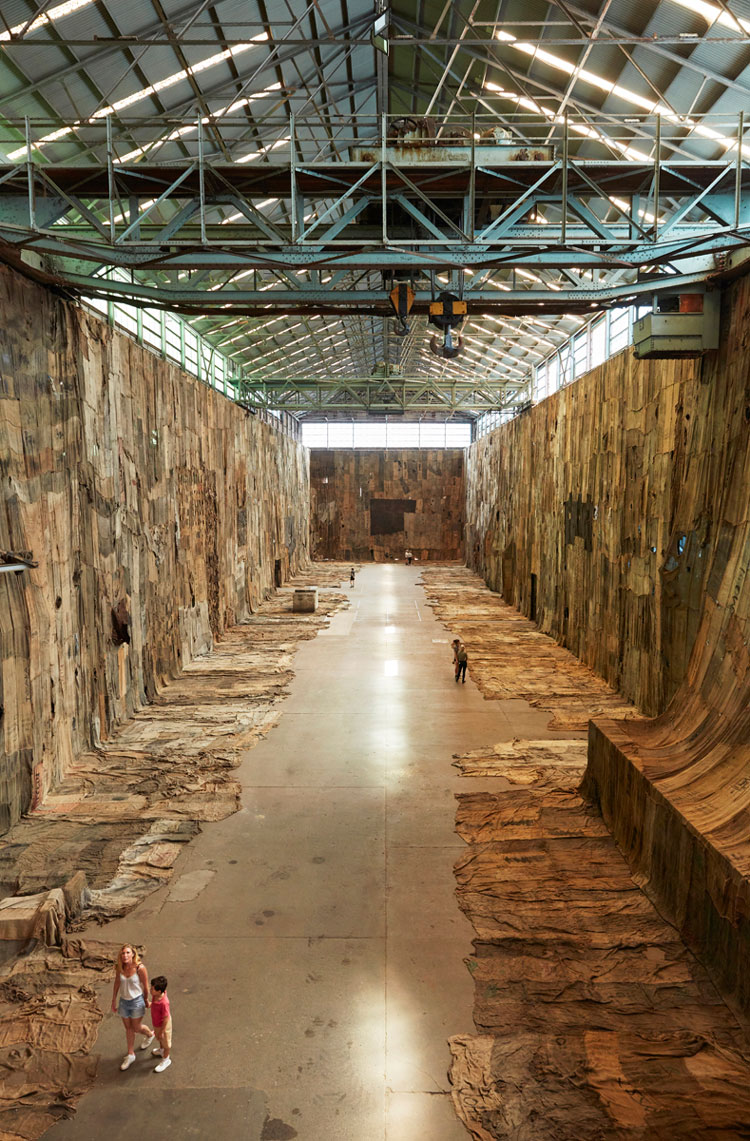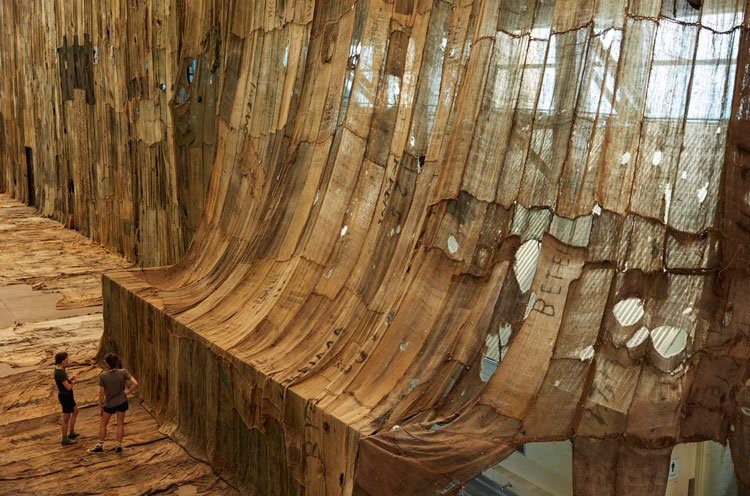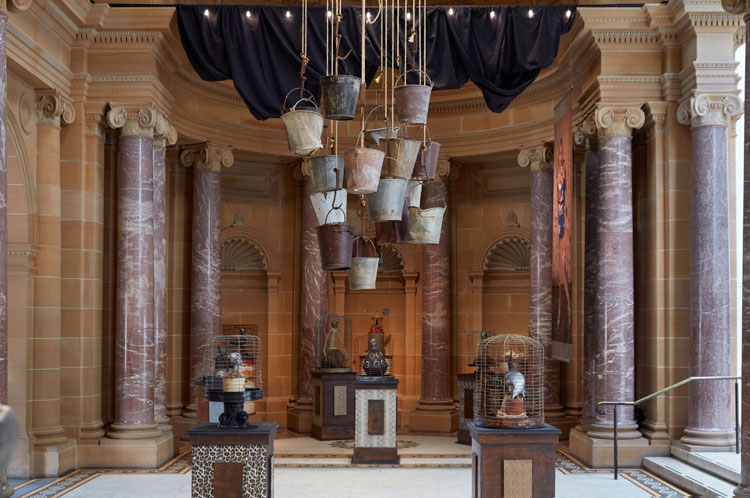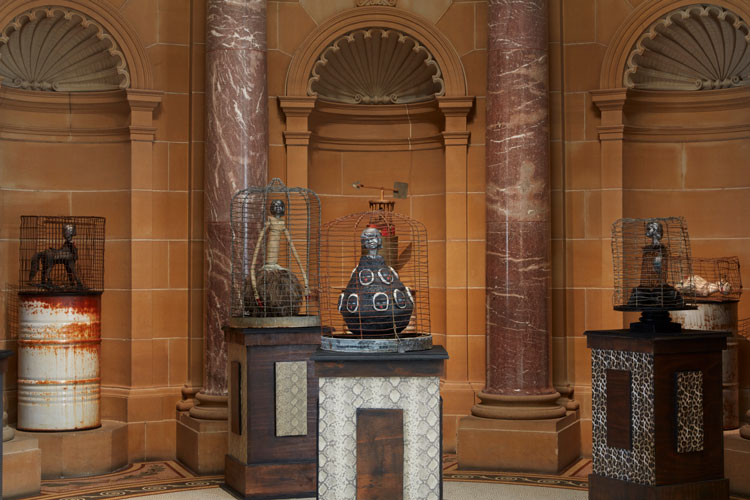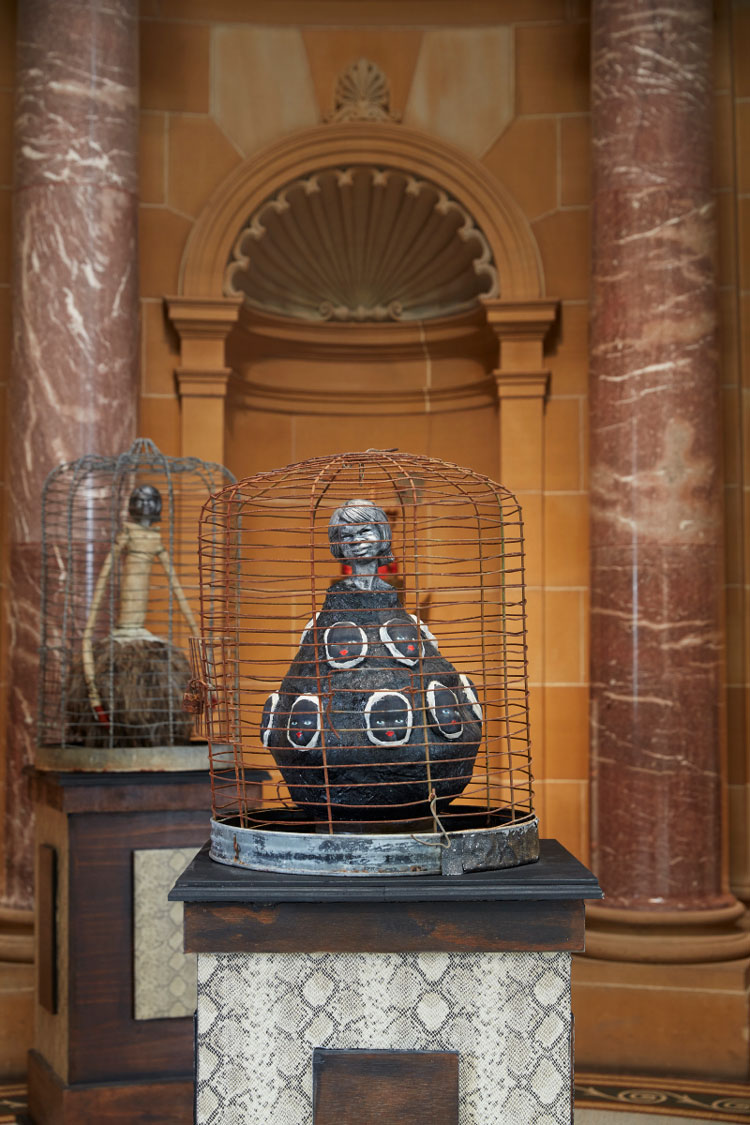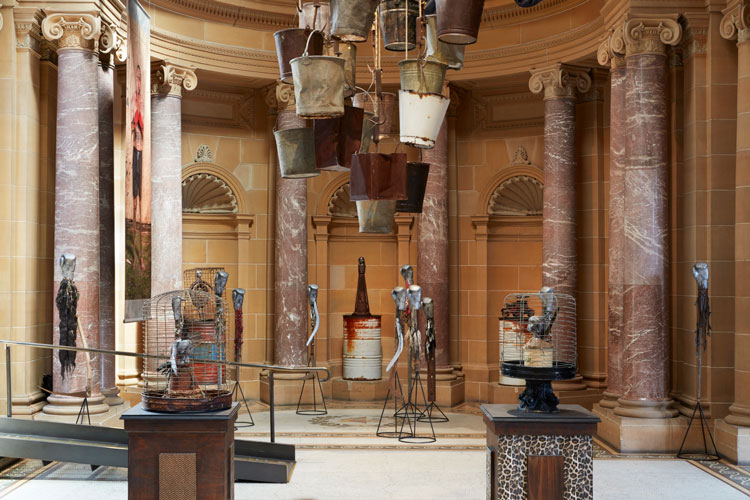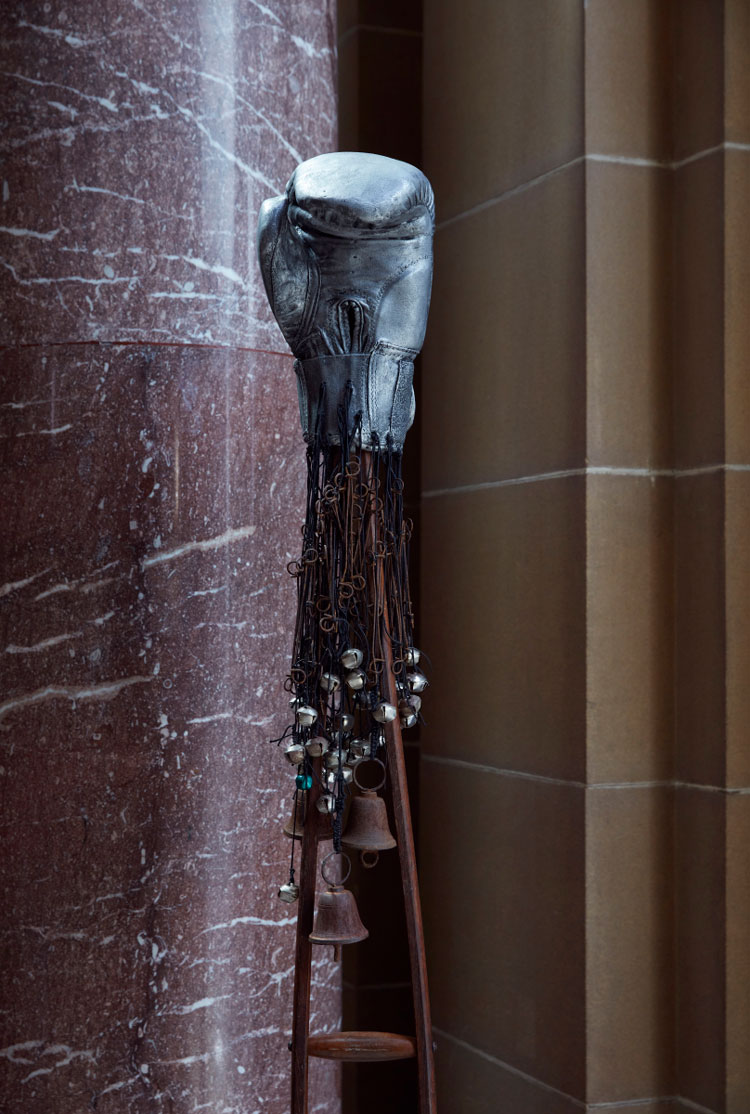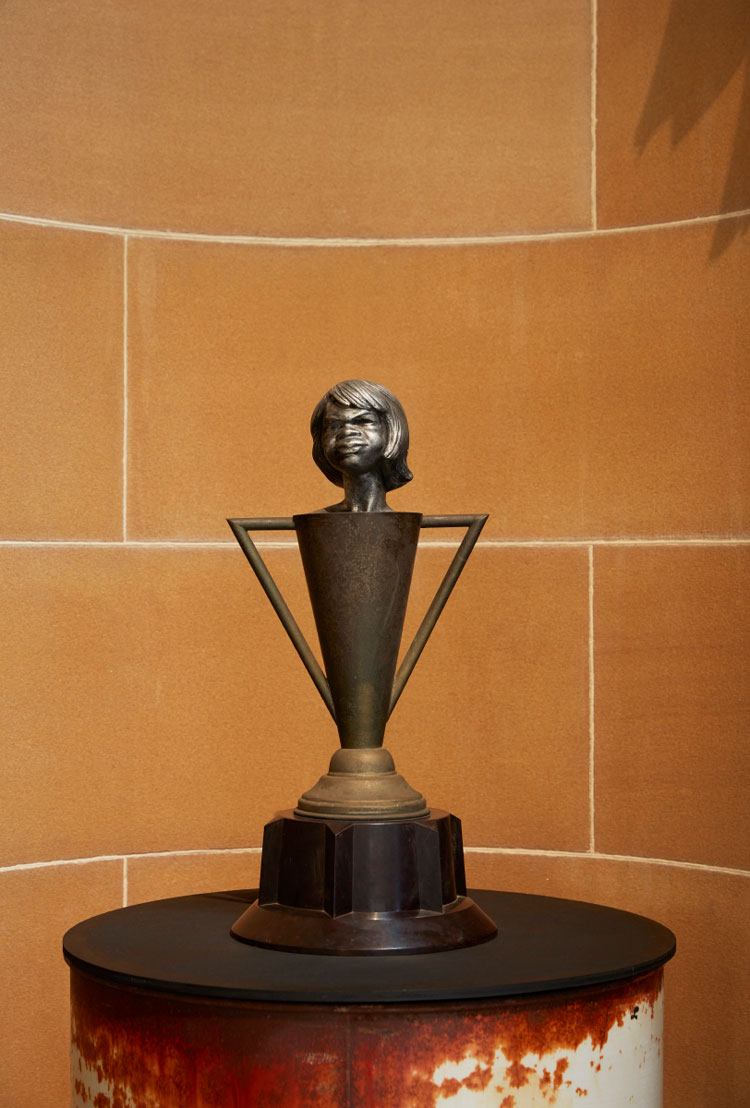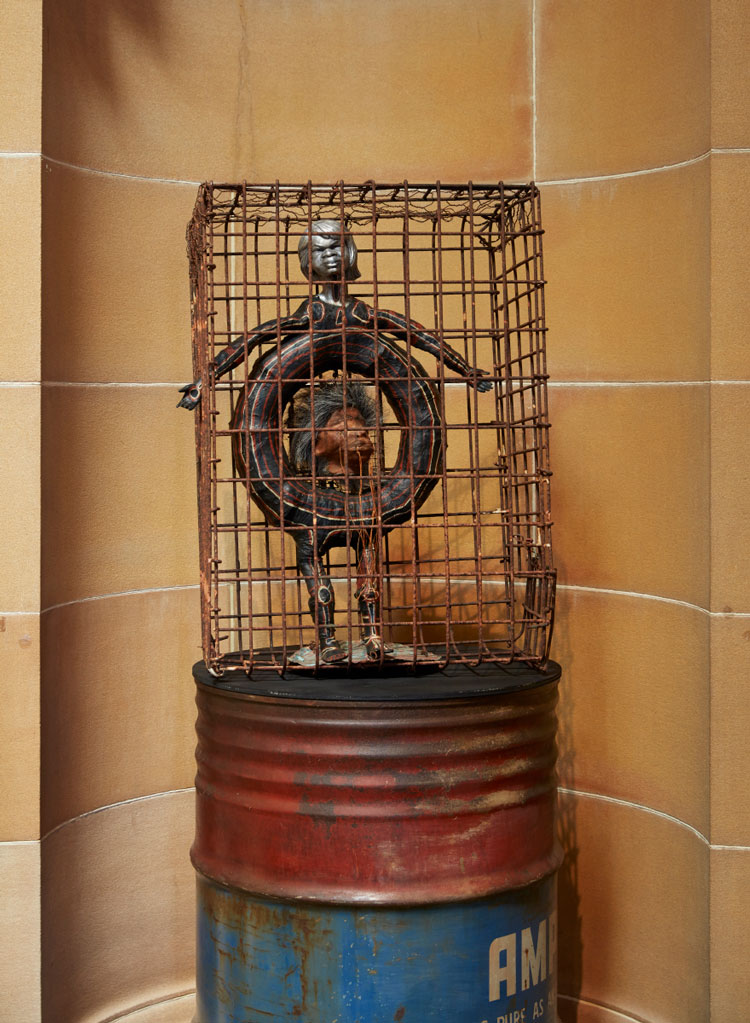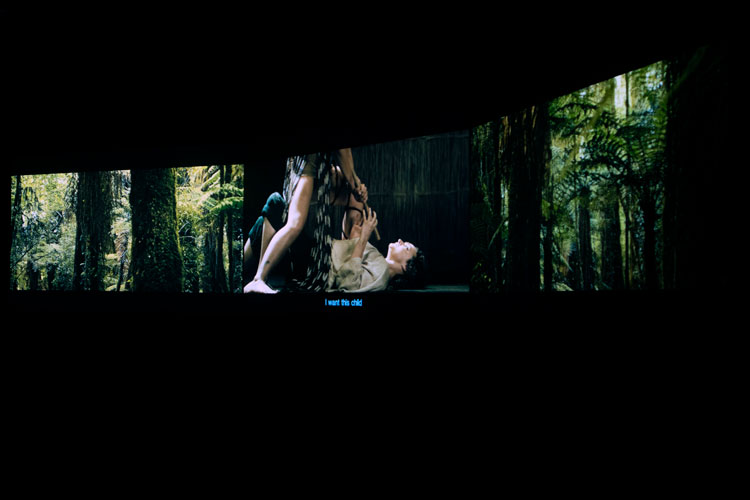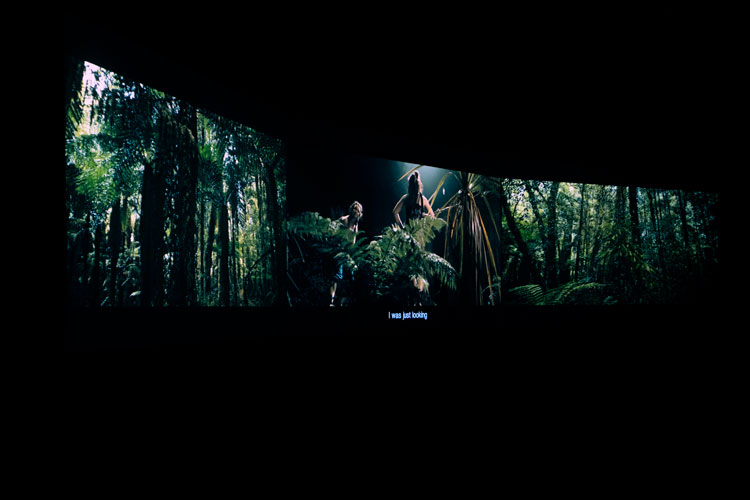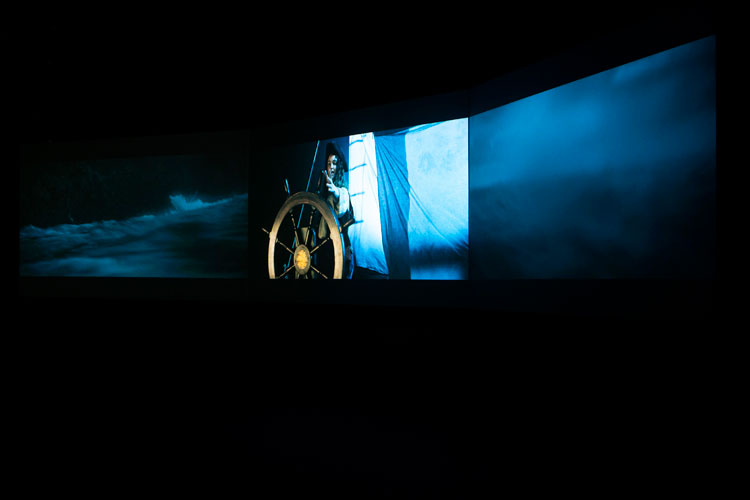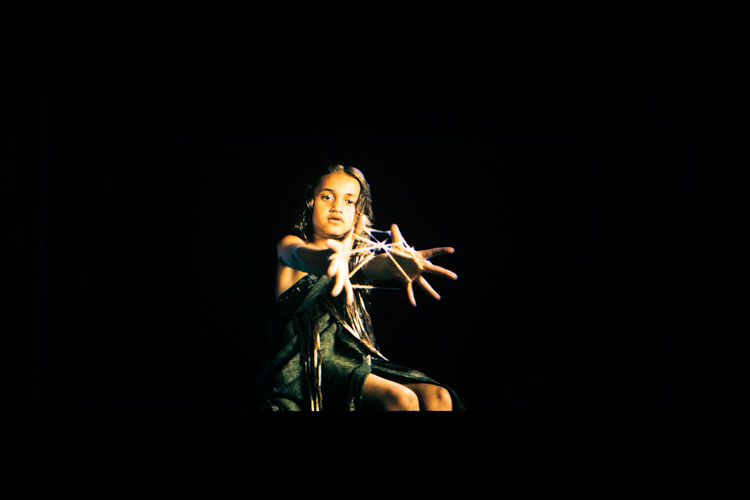

until September 2020
by JANET McKENZIE
This year, the artist Brook Andrew became the Sydney Biennale’s first Australian Indigenous artistic director, and the theme of racial reconciliation and healing took on particular resonance because of the Black Lives Matter demonstrations that have taken place around the world following the police killing of George Floyd in the US in May.
The Sydney Biennale has always allowed participating artists to lead the way in responding to current urgent social, political and environmental issues. This year, on 24 March, 10 days after it opened, it was forced to close because of the Covid-19 pandemic. In spite of the inevitable disappointment, the 22nd Biennale partnered with Google to present a remarkable range of online exhibitions and arts activities. It had originally been due to close in June, but its organisers rallied partner organisations to reopen from 16 June, extending the exhibition period until the end of September. This year’s biennale, which is artist- and First Nations-led, is presenting more than 700 artworks by more than 100 artists and collectives from around the world.
[image4]
Informed by the 2019 International Year of Indigenous Languages, Nirin is an important time to advocate for First Nation languages in the mainstream. Andrew chose Nirin as the title of the exhibition. It is a word that comes from his mother’s nation, the Wiradjuri people of western New South Wales, and translates as “edge”.
Andrew says: “Nirin is not a periphery, it is our centre, and it expresses dynamic existing and ancient practices that speak loudly. Nirin decentres, challenges and transforms dominant narratives, such as the 2020 Captain Cook anniversary in Australia and reorients western mapping, shining a light on sites of being that are often ignored or rendered invisible. Nirin is an inspirational journey driven by stories and grassroots practices, realised through twisting perceptions, moments of transition and a sense of being in the world that is interconnected.”
[image8]
Seven themes, ranging from the political to profound spiritual belief systems to quotidian rituals, inspire Nirin: Dhaagun (Earth: sovereignty and working together); Bagaray-bang (Healing); Yirawy–dhuray (Yam-connection: food); Gurray (Transformation); Muriguwal giiland (Different stories); Ngawaal-guyungan (Powerful Ideas: the power of objects); and Bila (River: environment).
Andrew says: “The urgent states of our contemporary lives are laden with unresolved past anxieties and hidden layers of the supernatural. Nirin is about to expose this, demonstrating that artists and creatives have the power to resolve, heal, dismember and imagine futures of transformation for re-setting the world. Sovereignty is at the centre of these actions. I hope that Nirin gathers life forces of integrity to push through often impenetrable noise.”
[image12]
Since its inception in 1973, the Sydney Biennale has challenged accepted orthodoxies and extended its remit to champion the work of Indigenous art. The British born curator Nick Waterlow (1941-2009) played a key role (as director of three biennales) in bringing about a momentous shift that took place in art and culture. His first biennale, in 1979, was entitled European Dialogue, thereby challenging New York’s hegemony as the international art capital and introducing Australian audiences to the European avant garde. Waterlow recalled that the event "caused quite a stir and it made people sit up; there were even demonstrations. Contemporary art became a very hot item. There were great expectations then … I had to walk a tightrope, and they were a very persuasive bunch.”
[image20]
Dialogue through, and prompted by, the visual arts subsequently came to play a key role in addressing issues of national and international significance. The 1979 biennale saw the first exhibition of Aboriginal art within an international context. Waterlow's 1988 biennale coincided with the bicentennial of white settlement in Australia. From the Southern Cross: A View of World Art 1940-88was a revisionist narrative of 20th-century art, enabling important links between European, American and Australian artists to be reassessed. The centrepiece was the Aboriginal Memorial, 200 hollow log coffins by artists from Ramingining, in Arnhem Land in the Northern Territory, which was commissioned by the National Gallery of Australia.
Now, 32 years later, the world is experiencing unprecedented restrictions and loss on many levels, and the importance of individual and societal connectivity and the capacity for the very process of art-making to heal and to assuage loss makes Nirin timely and wide-ranging. The reopening of the 22nd biennale has been met with gratitude and celebration for the physical experience it affords, even though travel from abroad is restricted.
[image5]
Wiradjuri artist Karla Dickens’s powerful installation in the vestibule of the Art Gallery of New South Wales takes rusty, imperfect sculptural forms to allude to the marginalised position her people have occupied since white settlement. A Dickensian Circus (2020) juxtaposes stories of Indigenous people who worked in circuses and travelling boxing troupes from the 1920s to the 50s (although I remember them in rural Australia in the 60s). She says that “with its ‘classical’ style and pretensions, the Art Gallery of New South Wales’ vestibule is a perfect post-colonial backdrop” for A Dickensian Circus. She says she “aims to reclaim this venerable antechamber” – which was built in 1901–02 from Sydney sandstone, with glass domes above and mosaic tiles below – “using rusty, bent and gnarly sculptures which divulge the hidden stories of marginalised people rarely seen in such a grandiose and majestic setting”. A poignant juxtaposition: dispossessed Aboriginal men were exploited for their physical athleticism, but doomed to an itinerant impoverished life in stark contrast to the wealth in material and cultural terms of the elite in Sydney and other Australian cities.
[image15]
In colonial times, the Cockatoo Island venue in Sydney Harbour housed as many as 500 convicts in wretched conditions. There, Lisa Reihana, one of leading artists of Maori and British descent from Aotearoa (the Maori name for New Zealand) – she represented her country at the 2017 Venice Biennale – deconstructs ideas around colonisation and Maori identity through an ambitious new video work. Te Wai Ngunguru (Nomads of the Sea) (2019) is presented in a haunting dark chamber, a fitting backdrop for the dramatic portrayal of Australia’s first female pirate, the little-known Charlotte Badger. A convict turned buccaneer she was transported to Australia for stealing four guineas and a silk handkerchief. After giving birth in the Parramatta female factory, she set sail for Tasmania and, while working on board as a domestic, led a mutiny, hijacked the ship and sailed for New Zealand. She was taken in by a Maori chief with whom she lived, becoming one of the first European women to settle in Aotearoa / New Zealand. Reihana says: “She was offered safe passage to return to Britain and she chose not to return; she chose to follow her own destiny. Had she returned to Britain, she would have been seen as a woman who had ‘gone native’ and it would have been quite problematic for her.”
[image16]
Reihana presents the historic narrative as a means of uncovering marginalised figures and presenting them as complex individuals. A female pirate challenges the perception of white women needing to be protected. Nomads of the Sea has scenes of fierce female fighting; it also “connects Australia and New Zealand in history and in time”. Reihana says that, through her creative take on history in her art, she is creating a space to interrogate racial and sexual politics: “[Back then], Maori chiefs used to have quite a number of wives because people lived in small villages, but there were famous Maori women who would lead armies.”
Over the past 25 years in particular, many Australians have recognised the deplorable actions of colonial forebears against the Indigenous population, and the extreme cultural condescension used to impose European methods of living in an alien environment. In the process, they have begun to understand the unique and multifarious culture of the Indigenous Australians, including complex language systems, many fragile or erased due to persistent massacres and frontier wars. The death of language is, like marginalised aspects of society, “the death of an entire worldview”.1 Andrew’s art practice, which includes curating and conceiving Nirin, like the art of Susan Hiller2, seeks to draw attention to such fragile aspects of culture, and to address the erasure of intelligentsia and spirituality deemed less valuable within western hegemony.
[image3]
In the immersive installation No friend But the Mountains (2012-20), the Ghanaian artist Ibrahim Mahama (b1987) covers the entire internal space of the Turbine Hall at Cockatoo Island with jute sacks. A patchwork of distressed browns and unique patina created by the gritty material against the architectonic forms of the former shipyard and penal colony, the work refers to the specificity of the troubled history while asserting the parallel with present-day labour struggles and incarceration that often remain out of sight.
The potent materiality on such a vast scale carries with it an overwhelming physicality: smells and traces of lives lived and lives lost. As the world has united for Black Lives Matter, the 22nd Biennale of Sydney responds with an uncanny authority, a performance that has been at rehearsal stage in Australia over the past 40 years yet still requires to inform the country’s politics and penetrate the justice system.
[image18]
Also on Cockatoo Island, Tony Albert’s Healing Land, Remembering Country (2020) is a greenhouse nursery with native plants, handwoven baskets, a wooden awning and seats. Visitors are encouraged to impart their memories, which will be inscribed by the greenhouse gardeners on paper embedded with the seeds of local plants and placed in one of the baskets that has been carefully woven by the hands of many Aboriginal artists from all over Australia. In time, this paper will be buried at distributed at various sites and will sprout new life, reinstating endemic flora and gently healing the ecosystem. This project aims to rejuvenate and also heal the land.
The biennale as a whole demonstrates that we all have a role to play in building a fairer and more compassionate world and that art underpins this, a capacity for change.
References
1. Susan Hiller interviewed by Richard Grayson for Talking Art at Tate Modern, London, June 14, 2008.
2. Susan Hiller: Channels, Matt’s Gallery, London, 13 February–14 April 2013, Studio International, 2013.
